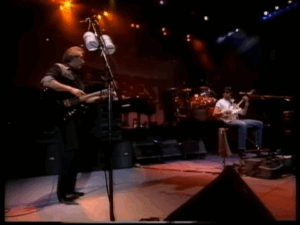Reliving 5 Classic Rock Albums Of 1966

Frank Zappa live in 1984 - F.Q.C. RÉCORDS FQC-RECORDS / Youtube
Rock became “classic” as the ’60s rolled into action, and saw distinction from various genres as the decade reached a ripe old age. In a way, 1966 was an authentic year if one really wanted to take a look at how these acts consolidated their creative energy into sonic output. We’re not doing Beatles or Beach Boys in this list, however, to give way to honorable mentions that are amazing in their own right.
The Kinks – Face To Face
This transitional period between the punk act’s grit-based days into their more civilized era is the perfect example of musical evolution. The Kinks were welcomed into the industry with this full-length effort that showed their strengths as songwriters.
Simon & Garfunkel – Sounds Of Silence
Paul Simon’s time off from the duo’s activities gave him time to do a solo record, where some songs actually ended up on Sounds Of Silence. The title track was also remade into a full rock song arrangement, boosting the album to become one of their most acclaimed catalogs of all time.
Buffalo Springfield – Buffalo Springfield
Kickstarting Stephen Stills and Neil Young’s road to stardom, the self-titled debut of the band shows its dynamism even at its early stages. Country and folk influences mingled with the psych-rock sound of the band, effectively fueling the development of the Los Angeles Sound.
The Butterfield Blues Band – East-West
The Butterfield Blues Band mostly did covers in their earlier catalogs, taking material from blues icons like Muddy Waters and Robert Johnson. But never without a twist, as the band hits its stride with more free-form finesse and jazziness in their renditions.
The Mothers Of Invention – Freak Out!
Freak Out! has Frank Zappa’s genetics sprayed all over it, being one of the most unique records to have ever been released in its time – and even until now. Zappa’s penchant for interesting arrangements and themes make it a Schrodinger’s cat of rock albums, in that it makes sense and not – simultaneously.
















